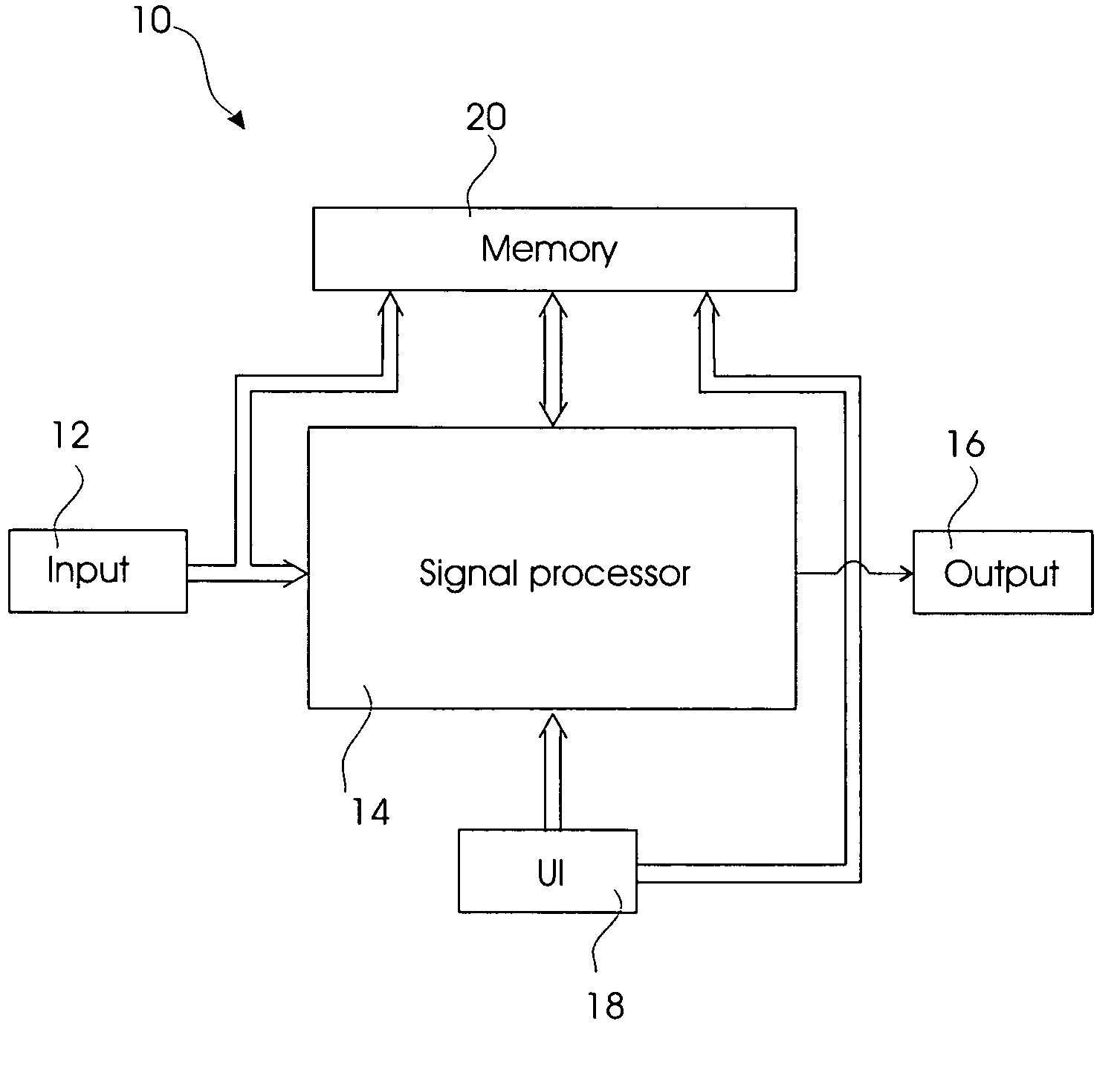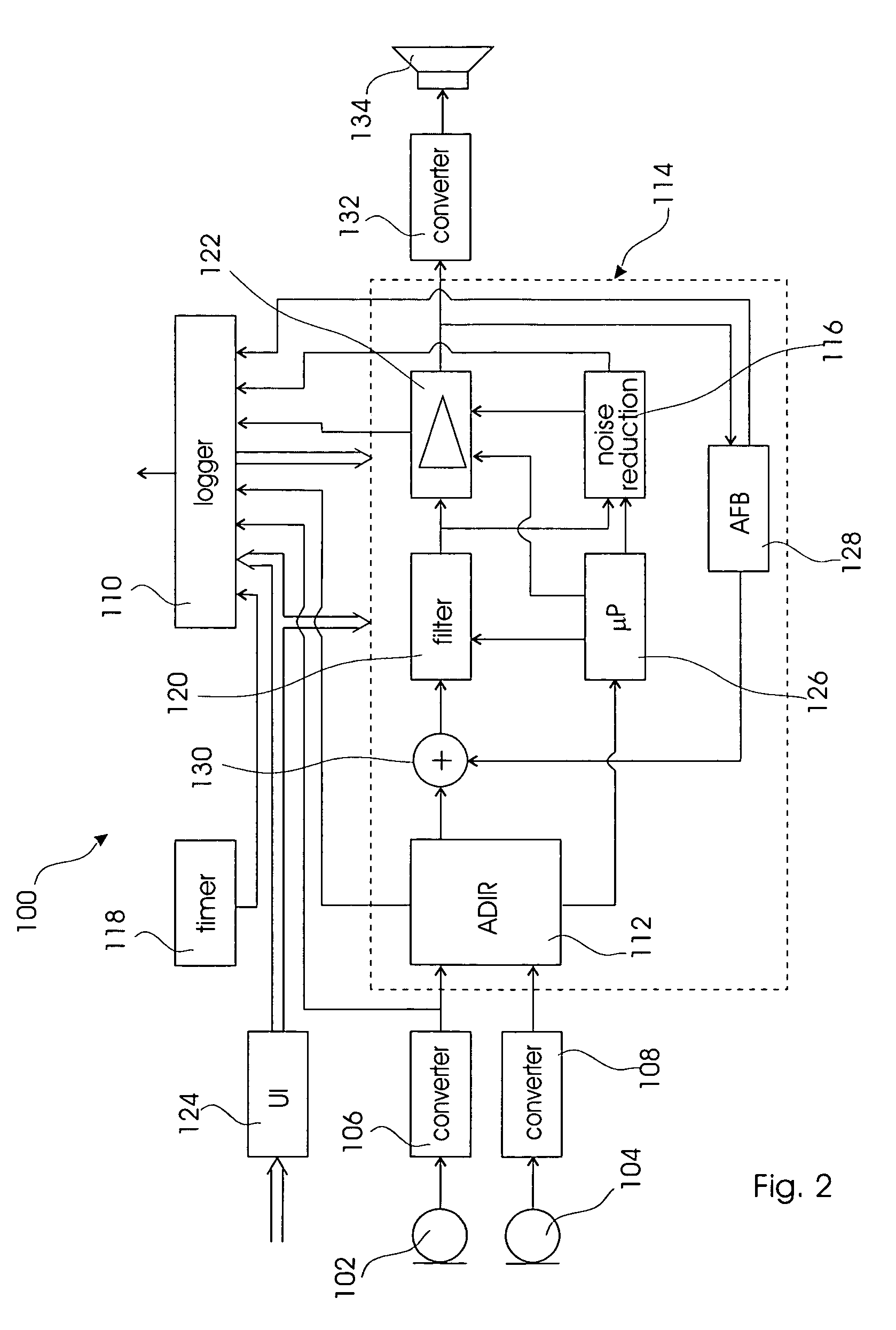Hearing aid for recording data and learning therefrom
a technology for recording data and hearing aids, applied in the field of hearing aids, can solve the problems of static learning features, user's change of volume or program selection, etc., and achieve the effect of improving the adaptation of hearing aids
- Summary
- Abstract
- Description
- Claims
- Application Information
AI Technical Summary
Benefits of technology
Problems solved by technology
Method used
Image
Examples
Embodiment Construction
[0036] In the following description of the various embodiments, reference is made to the accompanying figures, which show by way of illustration how the invention may be practiced. It is to be understood that other embodiments may be utilised and structural and functional modifications may be made without departing from the scope of the present invention.
[0037]FIG. 1 shows a general block diagram of a learning hearing aid designated in entirety by reference numeral 10. The learning hearing aid 10 comprises an input unit 12 converting a sound to an electric signal or electric signals, which are communicated to a signal processing unit 14.
[0038] The signal processing unit 14 processes the incoming electric signal so as to compensate for the user's hearing disability. The signal processing unit 14 generates a processed electric signal for an output unit 16, which converts the processed electric signal to a sound pressure level to be presented to the user's ear canal.
[0039] The learn...
PUM
 Login to View More
Login to View More Abstract
Description
Claims
Application Information
 Login to View More
Login to View More - R&D
- Intellectual Property
- Life Sciences
- Materials
- Tech Scout
- Unparalleled Data Quality
- Higher Quality Content
- 60% Fewer Hallucinations
Browse by: Latest US Patents, China's latest patents, Technical Efficacy Thesaurus, Application Domain, Technology Topic, Popular Technical Reports.
© 2025 PatSnap. All rights reserved.Legal|Privacy policy|Modern Slavery Act Transparency Statement|Sitemap|About US| Contact US: help@patsnap.com



